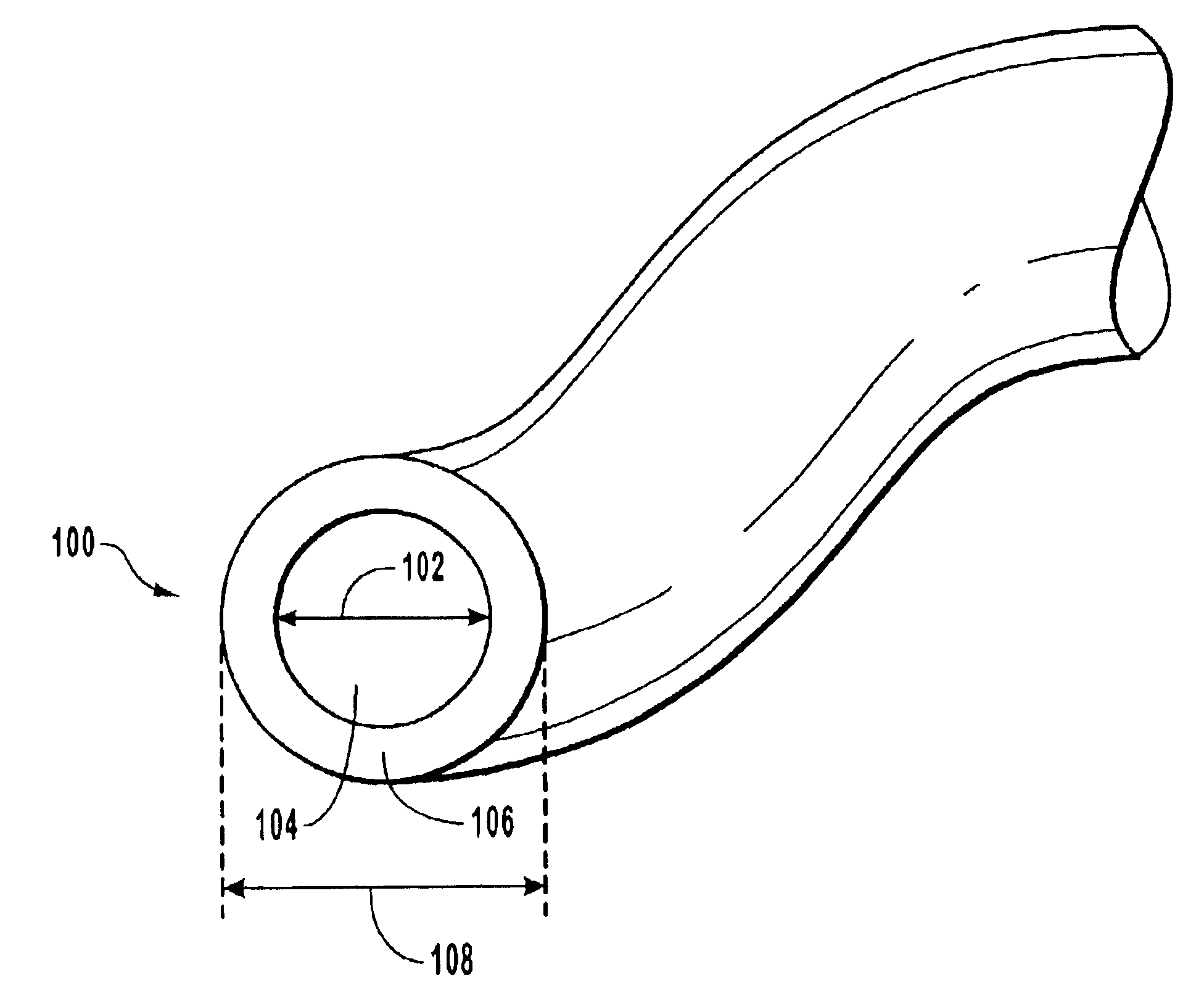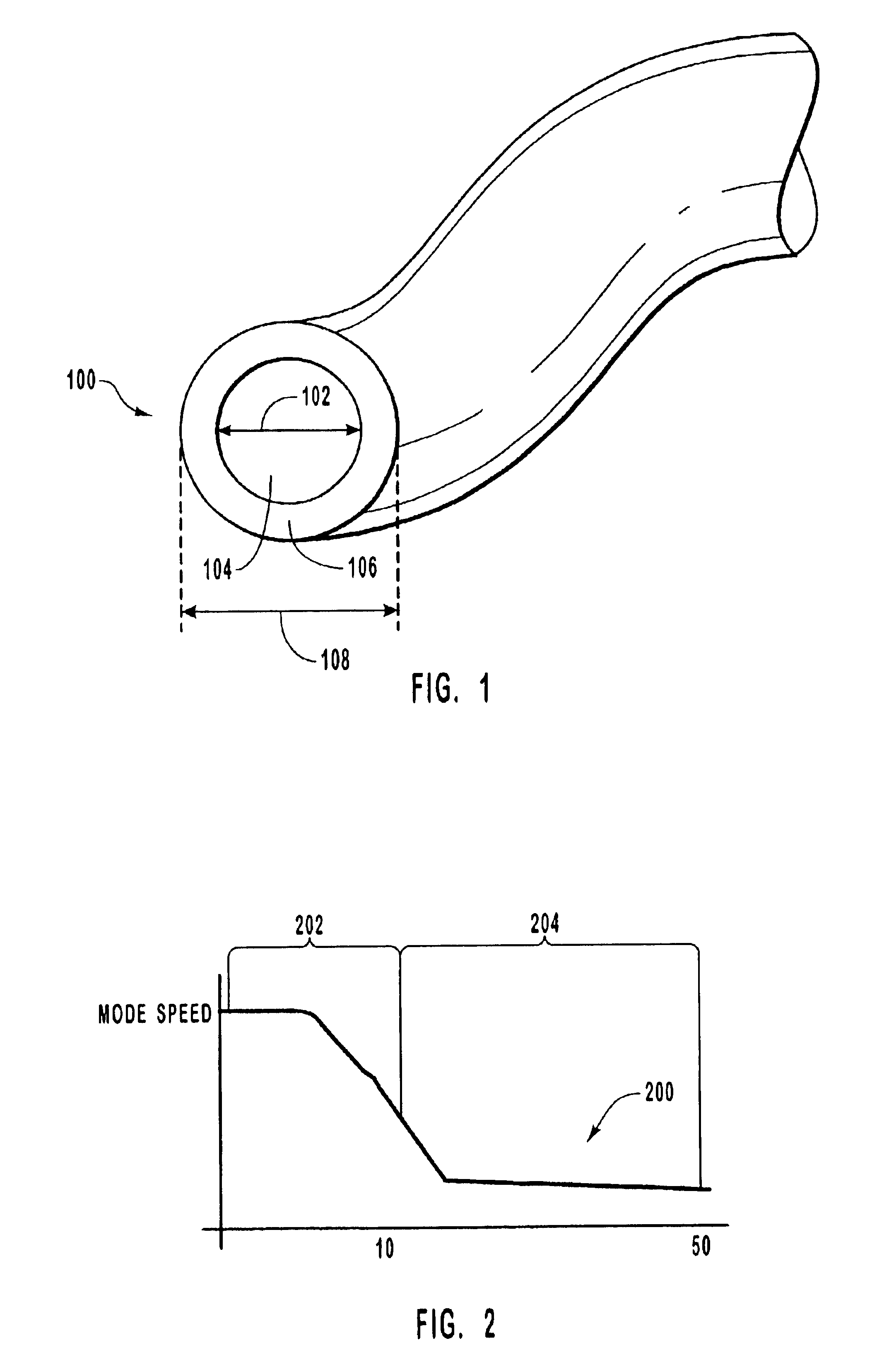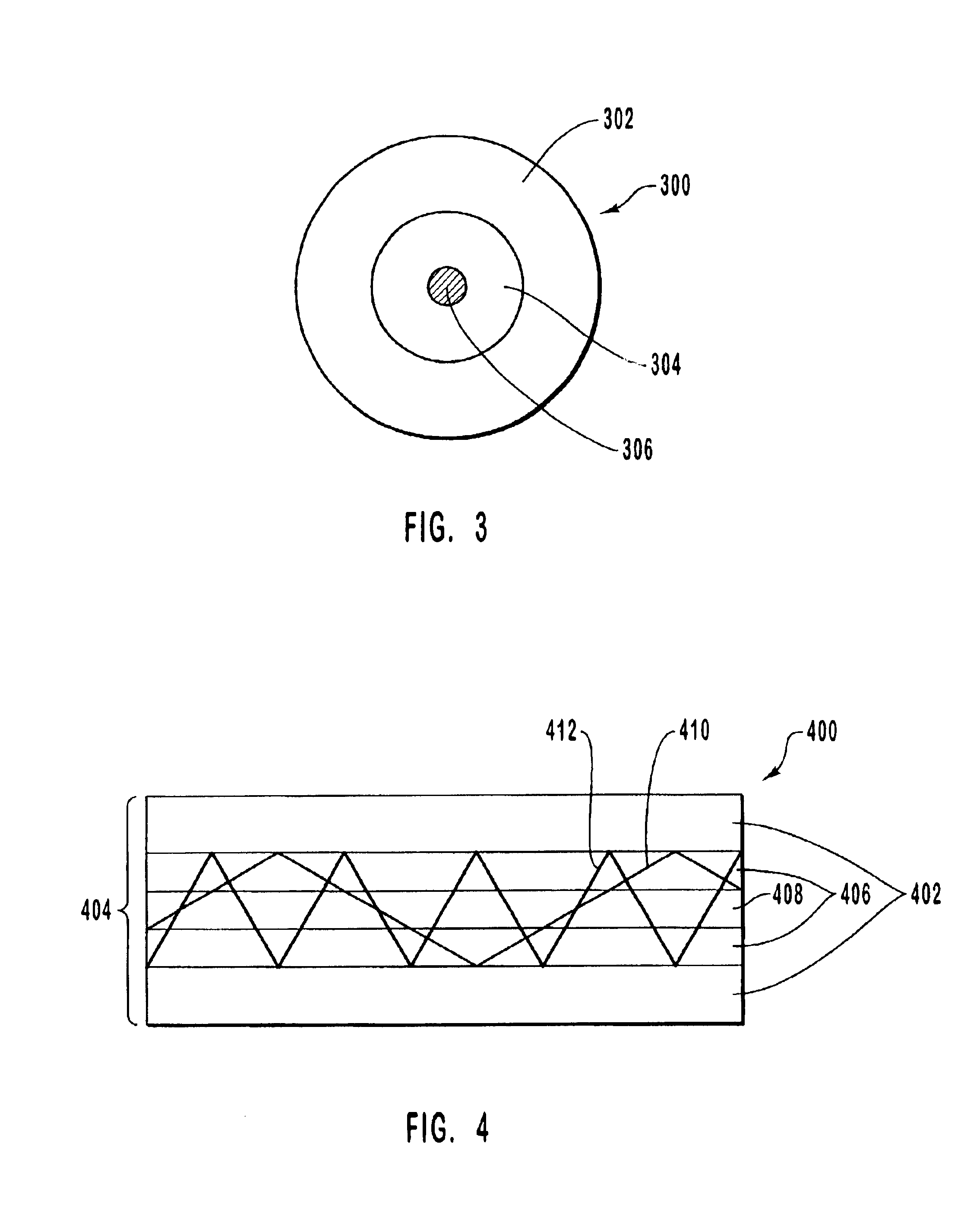Multiple mode fiber with mode discrimination
a multi-mode fiber and mode discrimination technology, applied in the field of optical fibers, can solve the problems of limiting the effectiveness of graded index multi-mode fibers in high-speed multi-mode links, limiting the distance with which conventional multi-mode optical fibers can be used, and high cost of graded index multi-mode optical fibers. , to achieve the effect of reducing or eliminating low-order modes, reducing propagation constant range, and reducing modal dispersion
- Summary
- Abstract
- Description
- Claims
- Application Information
AI Technical Summary
Benefits of technology
Problems solved by technology
Method used
Image
Examples
Embodiment Construction
In communication systems that use optical fibers, mode partition noise and modal dispersion have limited the both the transmission rate and travel distance of the communication system. Modal dispersion and mode partition noise occur because light from a source such as a vertical cavity surface emitting laser or a edge emitting laser couples to many different modes. As previously indicated, the modal propagation constant of each mode is different and leads to modal dispersion.
The present invention relates to a multiple mode optical fiber that discriminates against certain modes. In particular, the present invention relates to a multiple mode optical fiber that effectively eliminates the lower order modes. The propagation constant of the remaining modes are closer together, and the effects of modal dispersion are reduced such that the travel distance and transmission speed are increased.
FIG. 1 illustrates an exemplary step index multimode optical fiber. The fiber 100 includes a core 1...
PUM
 Login to View More
Login to View More Abstract
Description
Claims
Application Information
 Login to View More
Login to View More - R&D
- Intellectual Property
- Life Sciences
- Materials
- Tech Scout
- Unparalleled Data Quality
- Higher Quality Content
- 60% Fewer Hallucinations
Browse by: Latest US Patents, China's latest patents, Technical Efficacy Thesaurus, Application Domain, Technology Topic, Popular Technical Reports.
© 2025 PatSnap. All rights reserved.Legal|Privacy policy|Modern Slavery Act Transparency Statement|Sitemap|About US| Contact US: help@patsnap.com



